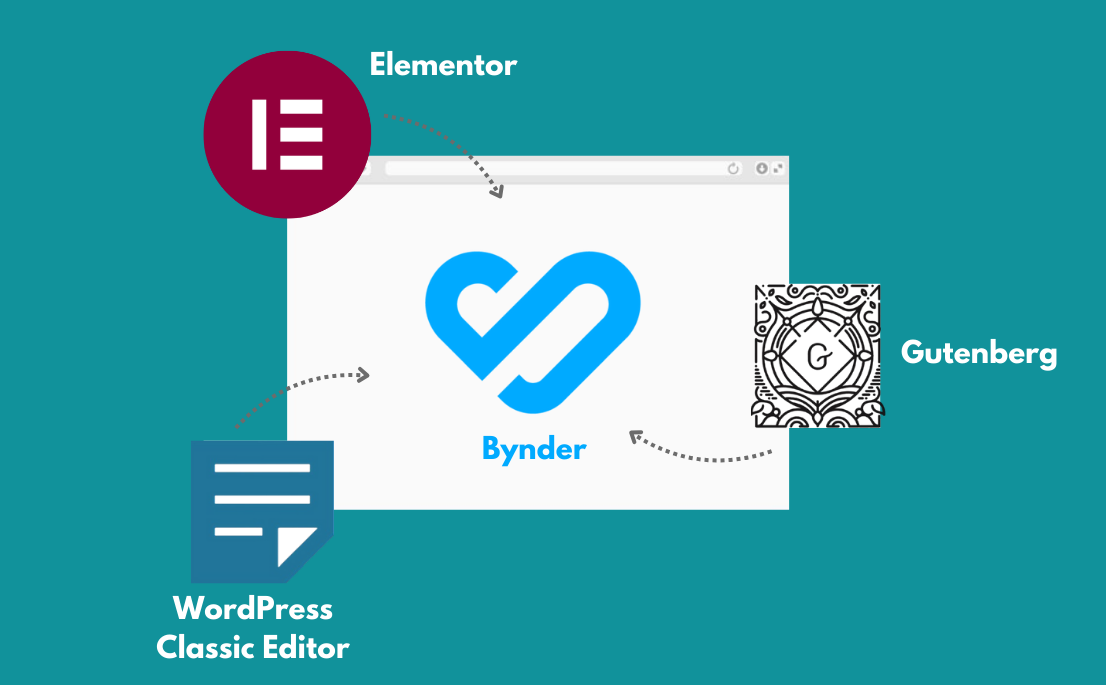
Introduction
The Bynder plugin is a fantastic tool for managing and accessing your digital assets right within WordPress. However, many users (us included) have faced a common challenge: the plugin didn’t fully support the Classic Editor and Elementor. This limitation posed a hurdle for those who rely heavily on these editors for building content.
Determined to overcome this obstacle, we decided to update the Bynder plugin and bring it up to speed with the functionality needed for seamless integration with Classic Editor, Elementor, and Gutenberg. Here’s a breakdown of what we did and why this matters.
Understanding the Challenge
By default, the Bynder plugin is designed to integrate with Gutenberg, the block-based editor that has become WordPress’s standard. However, many WordPress users still prefer the Classic Editor for its simplicity, and they use Elementor for its advanced design capabilities. These editors, unfortunately, weren’t supported natively by the plugin, leading to:
- Limited Usability: Users couldn’t access Bynder’s assets while working in Elementor or Classic Editor.
- Workflow Interruptions: Switching between editors to manage assets was inefficient and cumbersome.
Frustration for Designers and Developers: The lack of flexibility hindered teams working across various types of content.
Exemplifi's Solution: Updating the Bynder Plugin
The goal was clear: enable Bynder to work seamlessly with all three editors — Classic Editor, Elementor, and Gutenberg. To achieve this, we made some strategic updates to the plugin’s code. Here’s what we did:
1. Enqueued the Necessary Scripts and Styles
We ensured that the required JavaScript and CSS files for the Bynder plugin were loaded in all environments:
- Classic Editor: Added logic to enqueue the assets when editing posts or pages.
- Elementor: Customized the plugin to detect when Elementor’s editor was in use and loaded the assets accordingly.
- Gutenberg: Retained the existing compatibility.
2. Localized Data for Dynamic Functionality
Using WordPress’s wp_localize_script, we passed essential configuration settings (like Bynder domain, search terms, and nonce values) to the plugin’s JavaScript. This ensured the plugin had all the information it needed to function in every editor.
3. Registered Blocks and Components for Compatibility
- Modified the plugin to handle Gutenberg blocks, ensuring that Bynder’s features were still accessible in the block editor.
- Adjusted the JavaScript logic for the Elementor editor, integrating Bynder as an asset manager without conflicting with Elementor’s interface.
Why This Update Matters
This update isn’t just about making the Bynder plugin compatible with Classic Editor and Elementor; it’s about empowering WordPress users to work the way they want. Here’s why it’s significant:
- Improved Workflow Efficiency: Users can now seamlessly manage their digital assets directly within their preferred editor — no switching, no hassle.
- Flexibility for Diverse Teams: Teams using different editors for various types of content can now access Bynder without limitations.
- Future-Proof Solution: With support across all major editors, this update ensures the Bynder plugin remains relevant and adaptable to evolving workflows.
The Impact: A Unified Editing Experience
With these changes, the Bynder plugin now supports:
- Classic Editor: Allowing users to insert assets into traditional posts and pages effortlessly.
- Elementor: Providing designers and content creators full access to Bynder’s library while building visually stunning layouts.
- Gutenberg: Continuing to offer robust integration with WordPress’s modern block editor.
This means that regardless of your editing preference, you can now leverage Bynder’s digital asset management capabilities to their fullest potential.
Conclusion
Updating the Bynder plugin to support Classic Editor and Elementor has been a rewarding journey. It bridges a critical gap for WordPress users, making it easier than ever to manage and integrate digital assets across different editing environments.
If you’re a developer or designer who uses Bynder and needs compatibility with Classic Editor or Elementor, this update is a game-changer. It showcases how a little customization can go a long way in enhancing functionality and usability.
If you enjoyed this post, join us on Linkedin, X and Facebook for more updates! Happy coding
